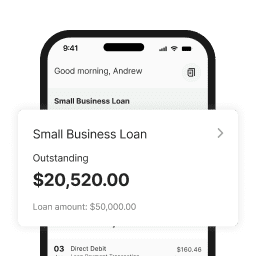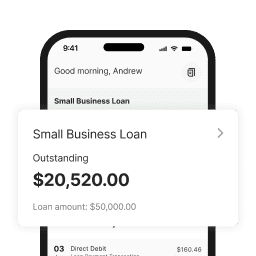A step-by-step guide to claiming tax deductions on business vehicle expenses, plus handy tools to help you calculate what you could claim.
At a glance
- If you use a vehicle for both business and personal reasons, you’ll need to calculate what proportion of costs are specifically for business purposes.
- If the vehicle you’re claiming for is a car, try either the cents per kilometre method or the logbook method.
- For other vehicles, such as motorcycles, the actual costs method is the one you’ll need.
- Whichever method you use, keeping accurate records of how you use your vehicle is essential – and it starts with using a logbook.
If you use your vehicle for business purposes, then you could claim the full running costs as a business expense at tax time.
But if you use a vehicle for both business and personal reasons, there are few extra steps involved to make sure you claim the amount you’re eligible for. These calculations can be tricky if you’re not sure what to look for, so we’ve put together this handy guide to help.
Choose a method of calculation
First, work out how the ATO would identify the type of vehicle you’re using, because this could change the method you need to calculate your claim.
The ATO explains that, for income tax purposes, a car is a vehicle that holds a load of less than one tonne and fewer than nine passengers. This includes many four-wheel drive vehicles. If claiming for a car, sole traders and partnerships can use either the cents per kilometre method or the logbook method to calculate their deductions.
But if the vehicle you’re claiming for is a motorcycle or scooter, or can carry greater than one tonne or nine or more passengers, or if your business is a company or trust, then you’ll need to use the actual costs method.
You can claim expenses including fuel and oil, repairs and servicing, and insurance premiums, if those expenses are incurred while conducting work-related activities such as delivering items, collecting supplies or attending work-related conferences.
Regardless of vehicle type, it’s important to keep a logbook so you can accurately calculate and justify the percentage of vehicle use that’s for business purposes, and keep track of how you’re using the vehicle more generally. This is where keeping a logbook comes in.
You can use the myDeductions tool in the ATO app, or find another vehicle logbook app that provides the functionality you need.
Once your logbook is sorted, it’s time to start calculating.
Method one: The cents per kilometre method
The cents per kilometre method is one of the simplest ways of calculating the amount you can claim. It allows you to claim a maximum of 5,000 business kilometres per car, per year, and takes all your vehicle’s running expenses into account, from registration and fuel to servicing and insurance.
To use this method, identify the set rate for each kilometre travelled for business reasons, as determined by the ATO. For the 2020-21 financial year, the rate is 72 cents per km. Then, it’s as simple as using basic mathematics.
Let’s say you travel a total of 75km each week for work purposes when conducting deliveries or visiting clients. Across 52 weeks, you travel 3,900km for work purposes in the year. At 72 cents per km, the total deduction amount is $2,808.
Keep in mind that you aren’t necessarily required to provide evidence of how you calculate your kilometres if you use this method, but the ATO might ask you to – so be prepared to show it.
Method two: The logbook method
Using the logbook method is a little more effort than the first method – but gives a more comprehensive perspective on how you use your vehicle.
It requires maintaining either a hardcopy or electronic logbook of vehicle use, as well as either:
- Keeping receipts and invoices for all costs including fuel and oil costs, and all other expenses for your vehicle
- Estimating fuel and oil costs based on odometer readings, and keeping receipts and invoices for all other expenses for your vehicle
The vehicle use logbook must cover a minimum of 12 continuous weeks, and provide specific information about each trip and overall use – see the ATO’s list here. This 12-week logbook is valid for five years, unless your circumstances change and the logbook is no longer an accurate representation of your work-related use.
To use this method, use your 12-week vehicle logbook to calculate the proportion of total vehicle use that is work-related:
- Calculate the total number of kilometres you travelled during the logbook period.
- Calculate the number of kilometres you travelled for work trips during the logbook period.
- Divide the second amount by the first amount and multiply by 100 – this gives you the percentage of work-related use.
- Then, multiply this percentage by your total car expenses for the financial year to determine your claim amount.
For instance, if you travelled a total of 2,000km during the period recorded in your logbook, of which 1,400km were for work reasons, that means 70 per cent is your work-related percentage of travel.
1,400 / 2,000 * 100 = 70
If your total car-related expenses for the financial year amounted to $6,000, that means your deduction is $4,200.
$6,000 * 0.7 = $4,200
The ATO says you need to keep valid odometer records for the duration of your ownership of the vehicle you’re claiming for. These records should be kept for five years after the end of the income year, in the chance that you need them to support your claim.
Alongside claiming vehicle use expenses using this method, most sole traders and partnerships can also claim depreciation for a portion of the decline in value that matches the proportion of vehicle use that’s business-related – 70% in the example above.
Method Three: The actual costs method
The actual costs method, which is for sole traders or partnerships using vehicles such as motorcycles and scooters, or those that can carry more than one tonne, is similar to the logbook method, but requires you to keep track of the total costs of running your vehicle. There’s no estimating fuel and oil based on odometer readings.
That means keeping accurate records and proof of all vehicle-related expenses across the income year, including petrol and oil, repairs and maintenance, registration, and even tolls and parking. In addition to detailed records of expenses, you need to show how you have calculated your work travel as a percentage of overall travel.
Using this method, in most cases businesses can also claim a deduction for depreciation, or the reduction of a vehicle’s purchase price over a period of time.
Claiming work-related car expenses doesn’t have to be difficult – all it requires is due diligence, an accurate logbook and clear expense records. With a little effort, you’ll be getting back to work – and back on the road – in no time.
With Prospa’s fast application and decision, this time tomorrow you could have the funds you need to set your business up for success. Find out more.








